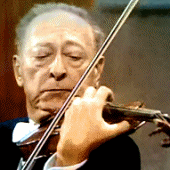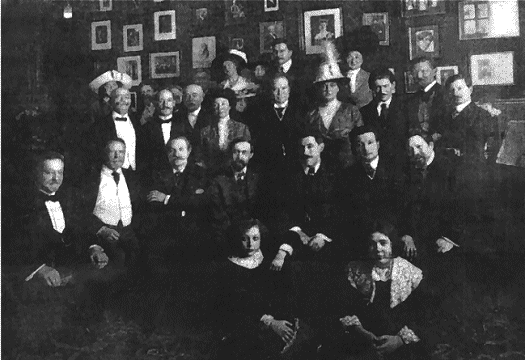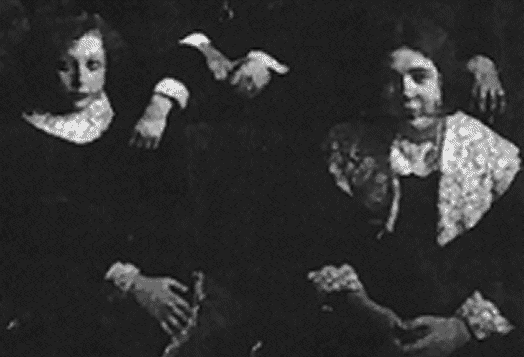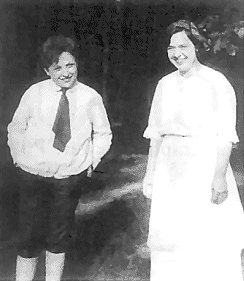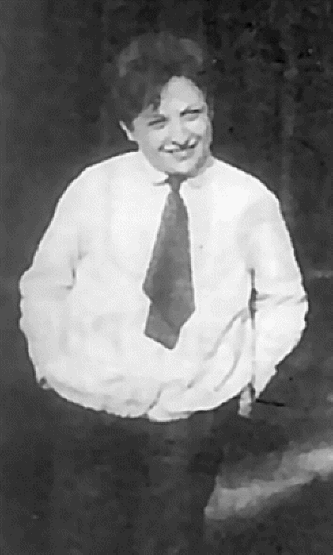![]()
|
JUDAISM,
I believe, represented quite an emotionally charged topic in Heifetz's life. I do
not refer to the religion itself and what it stands for, but rather to the Jewish
traditions, culture and mentality of what could be loosely termed 'the
turn of century Diaspora Jews' living in the Pale of Settlement (19th
and 20th centuries). For
Heifetz, the daily or weekly congregation in the synagogues had slowly turned
into a lamentable event
since, in
his opinion, through the years it had gradually shifted from a
purely religious function into a mere social event. He believed that the traditional crowd
in his time used the gathering as a pretext to see and to be seen, to gossip and
to exchange small
talk - his ever pet hate activity. It had nothing to do with religion. Apart from daily or weekly congregation, there were quite a few other characteristics and attitudes of that culture which could be disliked - indeed one has to have lived in that atmosphere and environment and to have experienced them in order to understand them. Most of those less attractive attitudes had evolved through the centuries out of necessity and the need for self preservation. Being cagy, perpetually on guard, reluctant to disclose nothing more than the absolute necessary ("this is for me to know and for you to find out", Heifetz would habitually retort), was perhaps a socially necessary tool for self-preservation, if a rather repelling one in close quarters and personal relationships. Deflecting inquiries and turning them into 'boomerang' questions for answers, tongue-twisters (whether occasion-appropriate or not) for circumventing direct answers, fuzzy and 'noncommittal' promises, sending conflicting and confusing signals and generally meddling in, and invading others people's space - are just a few such characteristics. Children in those traditional Jewish families were habitually 'over-cocooned', overbearingly dominated and controlled by their parents to a stifling degree. These traits are certainly not exclusive Jewish 'methods' of survival in an extremely perilous environment. Most minorities in similar circumstances would have engendered their own methods, I would imagine. That child over-protection attitude also included, strangely perhaps, a palpable measure of under-praising the offspring. I can personally affirm that one of the often given reasons for this lack of praise was that 'else it will go to his head', in other words, the kid will grow to be too full of himself. It really felt like a no-win situation: if one didn't do well one was reprimanded, if he did well he was never praised. Heifetz certainly grew up in such a praise-deprived environment - and it was telling that in his turn, he had perpetuated this attitude in adult life. Still, notwithstanding the exhibition of these traits in his relationship to others, I also believe that late in life Heifetz might have come close to making peace with, and reach a certain reconciliation with, his past and with the Mosaic tradition. As for pure religion as such - always a non-topic for discussion with Heifetz - he observed the New Year and Yom Kippur days. Judaism as a social-secular tradition was, I believe, enmeshed in Heifetz;s psyche and deeply associated with his parents' upbringing and their Vilna traditional background. It was basically the shtetl mentality against which he rebelled, as most youngsters coming of age in any family would do. When, at twenty-one, the time came ("It couldn't come too soon", he reminisced) to liberate himself from the stifling and overbearing influence of his parents, Heifetz didn't wait a day longer. In fact, he prepared his 'getaway' long before he reached that age. He secretly acquired a large flat in New York and, cometh the day, he informed his parents that he is moving out. He told them that from then on he would take care of himself and of his affairs and if they wished to visit him, they should call first. Tears, squalls, threats, emotional blackmail, recriminations and other 'traditional' methods of dissuasion, could not save the day. Heifetz had made up his mind. A mixture of fear, gratitude and respect had probably prevented Heifetz from breaking away from his parents at the age of eighteen when, legally, he could have done so. In some traditional Jewish families a man is not, rightly or otherwise, regarded as fully "adult" before he reaches the age of twenty-one (or even older). He can vote, serve, and possibly die in combat for his country, but adult he is not. It makes me smile recalling that, many years ago my own grandmother, also a Vilna born and bred lady, informed me that I will not come into possession of my share of inheritance from her before I reach twenty-one. When I asked her why twenty-one and not eighteen, she smiled dismissingly and said (emphasizing every syllable): "Eigh-teeeeen? At eighteen you are still a baby!" True. I was. And probably at twenty-one too. ● THE question of Heifetz's birth date is still an ongoing topic of discussion and surmise. Throughout his life the violinist maintained that he was born on February 2, 1901. He shared the date with Fritz Kreisler, also born on February 2, a quarter of a century earlier. Jack Pfeiffer, his long time RCA record producer and friend said that Heifetz was actually born in 1900 but his mother, Anna, had altered the date when nobody was looking. Other sources, including the Baker Dictionary, record his birth date as 1899. What could have been the reasons for Anna Heifetz to alter her son's birth date, if indeed she had done so? One possibility is to make Jascha younger than he actually was in order to enable him to leave the country for the United States tour in 1917. It is remembered that WWI was still going on, as was the Bolshevik revolution. Had Heifetz been born in 1899, he would presumably be eligible for army service. Even 1900 might have been too close for comfort, but 1901 would have certainly relieved him from army duties, so presumably Anna was making certain that the family chances were not going to be jeopardized by trivial details such as birth dates. Recently, new sources may shed some more light on the topic. On February 1st, 2001 the Vilna Gaon Jewish Museum opened a unique exhibition commemorating the city's famous son, Jascha Heifetz. Among the many documents one could find little Jascha's attendance sheet at the Imperial School of Music in town, between 1905 and 1909; programs of students' concerts in which he took part at the school; and newspaper clipping covering his return in 1913 from St. Petersburg for concerts in his native town. Of particular interest was a rare book of the Vilna Rabbinate which recorded Heifetz's birth as January 20, 1901. This may answer the question of his birth date once and for all (although it cannot be excluded that even those books could have been tampered with). But why the discrepancy of 13 days between this date and Heifetz's official date of February 2? Well, this can be explained by the usual difference which exists between the Gregorian and Jewish calendars. Heifetz's birth date was most probably recorded in the Rabbinate book according to the Jewish calendar (his paternal grandfather, it is recalled, was something of a Rabbi and possibly a cantor). When translated to its Gregorian counterpart, there is always a discrepancy of a few weeks as dates are shifted a few weeks earlier by the Jewish calendar. The other discrepancy, that between the Gregorian and the Julian calendars (the latter still being adhered to by some branches of the Russian Eastern Orthodox Church cannot justify the shift. In the Julian calendar case, the birth date would have occurred 13 days later, on February 15. The 'age fear' of Anna Heifetz might have been more real than first thought. The break of WWI had caught the Heifetz family in Germany. They were duly interned and refused leave to return to Russia. The reason was that father Rubin was a few months short of his 45th birthday, thus still eligible in principle for army service. This, the Germans wouldn't allow, as Russia was their enemy. When Rubin duly became 45 years of age, the Germans allowed the family to travel, via Sweden, back to Russia. An alternative way might be to turn to photos from his childhood, which may perhaps provide some answers. Below is a photo of Heifetz taken in Berlin in 1912, presumably when he was eleven. Since the photo was taken, dated and archived by people outside the Heifetz family, we may regard it as an objective document. (A larger version of it can be seen in Gallery, 1901 - 1917).
Below is an enlargement of the above. Heifetz is seated next to another child prodigy, the Hungarian Laszlo Ipolyi, said to have been 12 years of age at the time. The date is given as May 20, 1912. Does Heifetz look like an 11 years old boy or a 13 years old teenager?
It's not easy to tell, although he appears to be closer to 11 then 13. He could also pass as a 12-year old boy, if his mother did indeed tamper with the birth certificate. Here's another 'family-independent' sourced photo, with Ruth Ray in Loschwitz, Germany, dated 1914. (A larger version of it can be seen in the Gallery, 1901 - 1917).
And this is an enlargement of the above.
Keeping in mind that changes at that age can occur rather rapidly, here he does look older than in the photo from Berlin. Gone is the mandatory 'Sailor suit' of that era's wunderkinder. As a general rule, boys past their Bar Mitzva age abandoned those garments and started wearing ties. In this photo, taken in the summer, Heifetz is supposed to have been 5-6 months past his 13th birthday. I guess he does look about thirteen. Closed case then? I wonder. ● AS IF the posture of playing the violin is not unnatural enough, the violin - like the cello and the viola, but unlike other stringed instruments (anyone mentioned guitar?) - distinguishes itself by being constantly played out of tune. Heifetz once said that "I don't always play in tune, I just fix it quicker than anyone else". Discussing the question of the violin's unnatural position under the chin with the great Ruggiero Ricci, the famous violinist expressed his opinion that the fiddle should be really propped on the chest some eight-ten inches below the shoulder; the left arm would then be held much lower and playing would be easier. He also proffered his belief that left hand shifts are not much of a necessity and he believed that Paganini himself shifted very little, if at all. For that to happen, the "starting" position of the left hand on the fingerboard should be around the third or fourth position, from where Ricci believes it is easy to stretch the hand and fingers to reach down to the first position - or forward to the high positions - without really moving the thumb much, or at all. Coincidently, another famous violinists, Fritz Kreisler, advocated beginning to teach young children by starting directly with the third position. Carl Flesch had already mentioned the fact that the violin is almost never played in tune. It can be played approximately in tune, and those who approximate closer to the true pitch, sound more in tune. He was right. We simply cannot physically play it in tune. True, most violinists will occasionally hit the 'sweet spot' and be really close to pure intonation. When they do, the experience is richly rewarded by the violin ringing pure and true or, as a well-known fiddler put it, "it explodes in a thousand sounds" (more so, when a note happens to be near one of the resonant points of the particular instrument). A violinist forever hunts for the note, for true intonation. Correct, prolonged (endless really) practice aims at turning this into a process as accurate and as automatic as possible. To that end, practicing scales is a great and valuable aide. Guitarists, for example, fare somewhat better because they enjoys the luxury of frets. At rest, the string on the guitar is stretched almost the entire length of the instrument and hovers over the fingerboard frets at a small clearance (being a plucked instrument they only sport a flat, low, bridge, as there's no need for strings-crossing bowing). When a finger presses the string just behind the fret, the string is also stopped by the fret itself, which is about one-tenth the width of a human fingertip. It also has a sharp edge and is therefore much closer to the theoretical dimensionless point. There's no hunting for the note - just press the string behind the required fret and presto, you play in tune. Lucky guitarists! To further compound matters, those violinists with unusually thick fingers find it increasingly difficult to play the fiddle in tune in the high positions where the interval between notes may well be smaller than the width of their own fingertips... Indeed, they have to device ingenuous ways to switch and shift fingers out of the way to play consecutive notes in those high positions (nearer the bridge). There's not much we can do about that. But even if by miracle - or endless sweat and practice - we could reach the ability to play absolutely in tune, the fact is that the size of the finger tip changes daily, even if minutely so: one day it can be slightly swollen, wider, another day even more so, and still the following day it can be thinner again. It can actually change in size within the same day! One factor that can influence this is climate change. Although we can, and do, automatically adjust for these changes, approximation remains the name of the game. Note though, that we are talking here theoretical absolutes. On a daily basis, or empirically, almost no ear will be bothered by such minute pitch imperfections. There are still further and finer reasons which prevent us from playing in tune, but these are beyond the scope here. The bow can be instrumental to a degree in the way it can 'mask' our inability to play in tune. Everything else being equal, drawing the bow nearer the bridge will produce a sound richer in overtones; further away will produce a mellower, more muffled sound. A sound rich in overtones content will tend to reveal intonation imperfections more readily than the opposite softer, sul tasto - or perhaps flautando - sound. Similarly, the left hand vibrato also tends to mask impurities of intonation, with the sound fluctuating between a range of pitches, around the intended note. (Julien Capet knew all about that). Sometime, when checking intonation, it is useful to practice without vibrato. Come to think of it, we might as well resign to the idea that perhaps the only time we play in tune is during a portamento, excluding of course the intended start and end notes; for the notes in between will be - albeit for a split second - in tune. Nonetheless, this should not discourage any aspiring violinist - just listen to Heifetz and realize there's hope. ● A LOT has been written about Heifetz's dry sense of humor and sharp tongue. Indeed many fellow musicians and students alike had experienced it first hand. In social gatherings as much as in his master classes, Heifetz set the tone and topic of discussion and left no one in doubt who is the dictating figure of both. Often, his endeavor to make a point or his insistence on proving his point bordered on being offensive. Not that Heifetz himself thought he was being unsavory, it was more the way the recipient perceived it. One such occurrence is described by Andre Previn in his book No Minor Chords: My Days in Hollywood
It was indeed rare for roles to be reversed and for Heifetz to be on the receiving end of a sharp reply. If it did, it could have probably come only from someone outside the music fraternity. When visiting Israel in the early fifties the violinist had enjoyed the reception and entourage usually reserved for heads of states. Close security followed him everywhere, including professional, secret service-trained personal chauffeurs. One such driver, Azariah Harlap, was one of a pair of professional drivers-brothers. His elder sibling, Joshua Harlap, served as the country's first president, Haim Weizmann's driver while Azariah himself drove visiting VIPs. Since Harlap was also part of the security detail, he used to attend every concert from beginning to end, doubling as a personal body guard. After the first performance of the Brahms violin concerto with IPO - one of several scheduled - Harlap was driving Heifetz back to the hotel. Both men kept themselves to themselves before Harlap suddenly broke the silence: "You know Mr. Heifetz, it was an unusual cadenza that you played tonight. I have never heard before." "No you haven't" replied Heifetz. "It's my own. And what's more, I'll have to play it eight more times." At this point Harlap must have summoned all his sabra chutzpa as he swiftly retorted: "Well Mr. Heifetz, you don't have it so bad, it's me who will have to sit through it eight more times." Heifetz's reaction wasn't recorded but he certainly remembered the remark because years later he related it himself. Some thirty-odd years previously, Heifetz was on tour in Paris when he heard a violinist busking at a street corner. He stopped and listened for a while, then approached the fiddler and started talking to him about his playing. "I have one piece of advice to help you improve your playing" "What is it?" replied the busker. "I will give you 20 francs if you stop playing" The man took the money and left. The next day, on his way to rehearsal, Heifetz saw the same busker in the same place still playing badly, but this time with a placard up next to him reading: 'Student of Heifetz' It seems that sometimes modesty and humility, genuine or otherwise, must be learned the hard way... ● IT MAY or may not be a quirk of fate that Erich Wolfgang Korngold's music wasn't - and in some circles still isn't - taken more seriously. This fact is commonly attributed to Korngold's association with the Hollywood movie industry for which he wrote music. Many regarded this as a professional 'no-no', as if by so doing he sold his artistic integrity for money, or a musical dilution of the so-called serious, classical field into the thin, teflon-wrapped world of Hollywood. The fact that Korngold decided to turn to the film industry, vowing to himself never to compose serious music again as long as Hitler was in power, remained an obscure point lost on most critics. By 1945, when Hitler was defeated and the composer tried to return to 'serious' music, it was too late: his image had already been tainted by Hollywood. Korngold was in a no-win situation. On one hand he was hurt by the critics, while on the other hand earlier in his career he believed that his music was performed merely because he was the son of the music critic Julius Korngold. Oddly enough, the violin concerto op.35 did little to restore his confidence, for apart from its instant success, it arguably also became his best known and most popular composition, eclipsing all others. The rest are rarely performed, including quite an attractive cello concerto. We commonly credit Heifetz, and rightly so, for encouraging and championing contemporary composers to write for the violin. He certainly did that. In a respectable list of composers from whom he asked or commissioned works, such as Walton, Gruenberg, Rosza, Tedesco, etc. - Korngold is almost always mentioned in the same breath. Perhaps it is less known however, that the latter's violin concerto was composed neither at Heifetz's suggestion nor at his commission. In fact, it was Bronislaw Huberman who suggested the idea to write it (the two knew each other from the pre-War Vienna days). Nor is the work dedicated to Heifetz as some believe, but to Alma Mahler, Korngold childhood mentor Gustav Mahler's widow. But it was Heifetz indeed who premiered the concerto on February 15, 1947 with the Saint Louis Symphony Orchestra and conductor Vladimir Golschmann. It was received enthusiastically and of the Heifetz performance on the night, an enchanted Korngold wrote:
Heifetz's breathtaking and imaginative performance (and recording) of the concerto did indeed help establish it in the standard repertoire. The work had since been performed and recorded by other violinists but in my opinion none reach the Olympian heights and the introspective depths that Heifetz does - the second movement in particular - in this undeservedly and rather underrated composition.
|
|||





